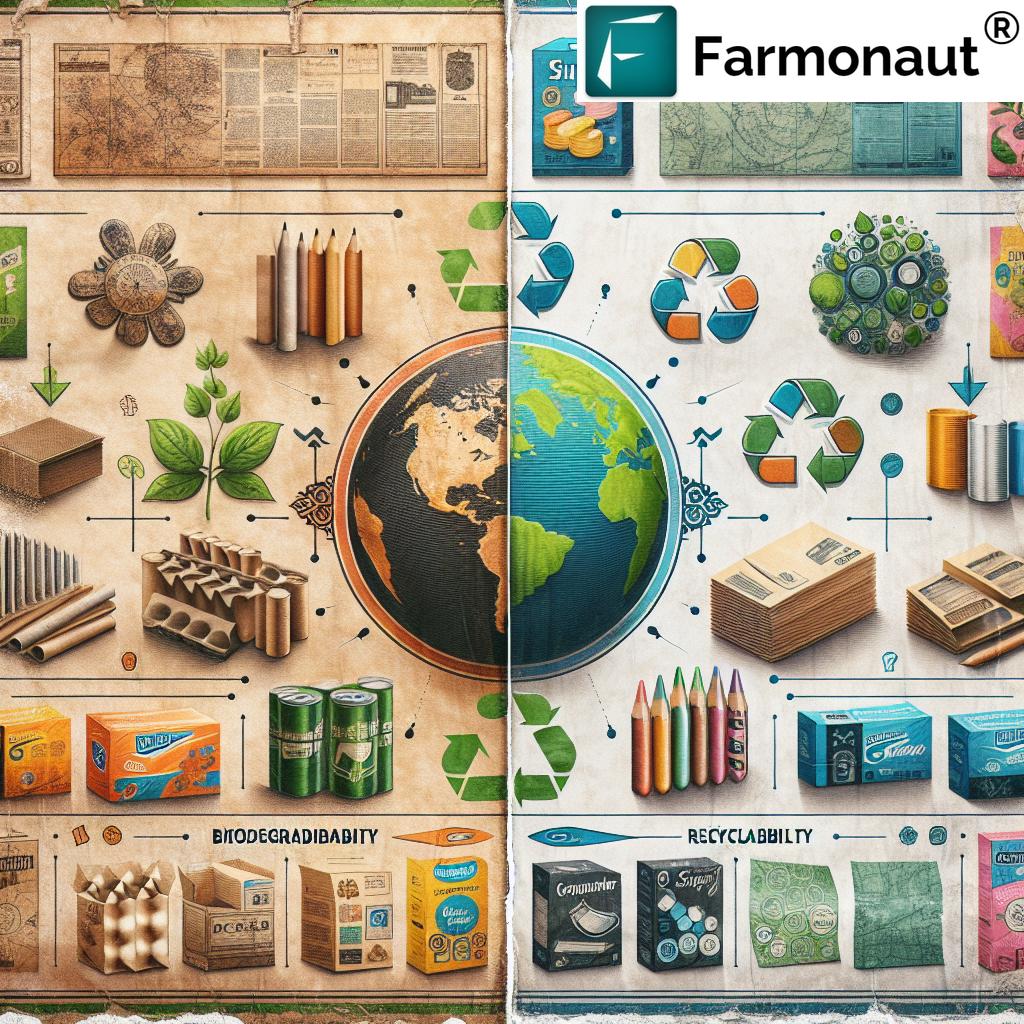Revolutionizing Sustainable Packaging: The Rise of Synthetic Paper in a Digital Era
“The global synthetic paper market is projected to reach USD 1.7 billion by 2035, showcasing significant growth potential.”
In an era where sustainability and innovation intersect, we are witnessing a remarkable transformation in the packaging industry. The rise of synthetic paper is not just a trend; it’s a revolution that’s reshaping how we approach packaging solutions in our increasingly digital world. As we delve into this fascinating topic, we’ll explore how synthetic paper is addressing environmental concerns, meeting diverse industrial needs, and paving the way for a more sustainable future.
Understanding Synthetic Paper: A Sustainable Packaging Alternative
Synthetic paper, unlike its traditional counterpart, is crafted from plastic-based polymers such as polypropylene (PP) and polyethylene (PE). This innovative material offers a unique blend of durability, water resistance, and eco-friendliness that’s capturing the attention of industries worldwide.
- Superior durability and tear-resistance
- Excellent water and moisture resistance
- Recyclable and potentially biodegradable
- Compatible with various printing techniques, including digital printing
The global synthetic paper market is experiencing significant growth, with projections reaching an impressive USD 1.7 billion by 2035. This surge is driven by increasing demand across various sectors, including food and beverage, pharmaceuticals, and outdoor goods packaging.

The Environmental Impact: Synthetic Paper vs. Traditional Paper
As we navigate the complexities of environmental sustainability, it’s crucial to understand how synthetic paper compares to traditional paper in terms of ecological impact.
- Reduced deforestation: Synthetic paper production doesn’t rely on wood pulp, helping to preserve forests.
- Lower water usage: Manufacturing synthetic paper requires significantly less water compared to traditional paper production.
- Recyclability: Many synthetic papers are recyclable, contributing to a circular economy.
- Durability: The longer lifespan of synthetic paper reduces the need for frequent replacements, minimizing waste.
While synthetic paper is derived from plastic polymers, ongoing innovations are focusing on developing fully recyclable and biodegradable options. This push towards sustainability aligns with global environmental goals and consumer preferences for eco-friendly products.
Innovative Trends Shaping the Synthetic Paper Industry
“Synthetic paper offers a sustainable packaging solution that is both recyclable and biodegradable, addressing environmental concerns in various industries.”
The synthetic paper market is witnessing several innovative trends that are propelling its growth and expanding its applications:
- Digital Printing Compatibility: Advancements in synthetic paper formulations are enhancing compatibility with digital printing technologies, opening up new possibilities for customization and on-demand printing.
- Biodegradable Synthetic Papers: Manufacturers are investing in research to develop biodegradable synthetic papers, addressing concerns about plastic pollution.
- Enhanced Printability: Improvements in surface treatments are resulting in better ink adhesion and image quality across various printing techniques.
- Expanded Applications: Synthetic paper is finding new uses in security documents, outdoor signage, and even currency, thanks to its durability and tamper-resistant properties.

Market Dynamics: Driving Forces Behind Synthetic Paper’s Growth
The synthetic paper market’s expansion is fueled by several key factors:
- Increasing environmental awareness and regulations
- Growing demand for durable and water-resistant packaging
- Advancements in polymer technology
- Rising adoption in food, beverage, and pharmaceutical industries
- Shift towards sustainable packaging solutions
These driving forces are not only boosting market growth but also inspiring continuous innovation in the synthetic paper industry.
Applications Across Industries
Synthetic paper’s versatility makes it an attractive option for various industries:
- Food and Beverage: Moisture-resistant labels and packaging that maintain integrity in harsh environments.
- Pharmaceuticals: Tamper-evident packaging and durable labels for medical products.
- Retail: High-quality tags and promotional materials that withstand handling and environmental factors.
- Outdoor and Adventure Products: Weather-resistant maps, guides, and packaging for outdoor gear.
- Security and Legal Documents: Forgery-resistant certificates, ID cards, and official documents.
The expanding range of applications demonstrates synthetic paper’s ability to meet diverse industrial needs while maintaining a commitment to sustainability.
The Role of Technology in Synthetic Paper Production
Advancements in technology are playing a crucial role in enhancing the quality and sustainability of synthetic paper:
- Polymer Science: Innovations in polymer formulations are improving the physical properties and environmental profile of synthetic paper.
- Manufacturing Techniques: New production methods are increasing efficiency and reducing the environmental footprint of synthetic paper manufacturing.
- Surface Treatments: Advanced surface modification techniques are enhancing printability and expanding application possibilities.
- Recycling Technologies: Development of more efficient recycling processes for synthetic paper, contributing to a circular economy.
These technological advancements are not only improving the performance of synthetic paper but also addressing environmental concerns associated with its production and disposal.
Consumer Preferences and Market Trends
Understanding consumer preferences is crucial for the continued growth of the synthetic paper market:
- Increasing demand for eco-friendly packaging solutions
- Preference for durable and long-lasting materials
- Growing awareness of the environmental impact of traditional paper production
- Shift towards brands that employ sustainable practices
These consumer trends are driving businesses to adopt synthetic paper as a way to meet sustainability goals while maintaining product quality.
Global Market Insights: Synthetic Paper Across Regions
The synthetic paper market shows varied growth patterns across different regions:
- North America: Leading in adoption, particularly in the packaging and labeling sectors.
- Europe: Strong focus on sustainable solutions driving market growth.
- Asia-Pacific: Rapidly expanding market, fueled by industrial growth and increasing environmental awareness.
- Middle East and Africa: Growing adoption in sectors like pharmaceuticals and outdoor goods.
Each region presents unique opportunities and challenges for synthetic paper manufacturers, influenced by local regulations, industrial needs, and environmental priorities.
Challenges and Future Outlook
While the synthetic paper market is poised for significant growth, it faces several challenges:
- Balancing cost-effectiveness with sustainability
- Overcoming misconceptions about plastic-based materials
- Developing fully biodegradable options without compromising performance
- Adapting to rapidly evolving environmental regulations
Despite these challenges, the future outlook for synthetic paper remains positive. Ongoing research and development efforts are focused on addressing these issues, promising even more innovative and sustainable solutions in the coming years.
Comparative Analysis: Synthetic Paper Market Trends and Projections
| Aspect | Current Status | 2035 Projection | Impact on Sustainability |
|---|---|---|---|
| Market Value (USD) | 1 billion (2025) | 1.7 billion | Positive – Drives innovation in sustainable materials |
| Recyclability (%) | 60% | 85% | High – Reduces waste and promotes circular economy |
| Biodegradability (Years) | 10-15 | 5-7 | Significant – Lessens long-term environmental impact |
| Digital Printing Compatibility (Scale 1-10) | 7 | 9 | Moderate – Enables on-demand printing, reducing waste |
| Water Resistance (Scale 1-10) | 9 | 10 | Positive – Extends product life, reducing replacement frequency |
| Application in Food Packaging (% Market Share) | 25% | 40% | High – Reduces food waste through better preservation |
| Application in Pharmaceutical Packaging (% Market Share) | 15% | 30% | Moderate – Improves drug safety and reduces packaging waste |
| Outdoor Signage Durability (Years) | 3-5 | 7-10 | Positive – Reduces need for frequent replacements |
This comparative analysis highlights the positive trajectory of the synthetic paper market, particularly in terms of sustainability and diverse applications. The projected improvements in recyclability, biodegradability, and durability underscore the potential of synthetic paper to significantly reduce environmental impact while meeting evolving industrial needs.
The Role of Innovation in Driving Sustainability
Innovation is at the heart of the synthetic paper industry’s push towards sustainability. Manufacturers are constantly exploring new ways to enhance the eco-friendly attributes of their products:
- Bio-based Polymers: Research into plant-based polymers for synthetic paper production
- Enhanced Recycling Processes: Development of more efficient methods to recycle synthetic paper
- Energy-Efficient Manufacturing: Adoption of cleaner energy sources and more efficient production techniques
- Smart Packaging Solutions: Integration of synthetic paper with IoT technologies for improved traceability and reduced waste
These innovations are not only improving the environmental profile of synthetic paper but also opening up new possibilities for its application across various industries.
The Impact of Digital Transformation on Synthetic Paper
The digital era is reshaping the synthetic paper industry in several ways:
- Digital Printing Advancements: Improved compatibility with digital printing technologies is expanding customization options and reducing waste.
- Smart Packaging: Integration of QR codes and NFC tags with synthetic paper for enhanced product information and traceability.
- E-commerce Growth: Increasing demand for durable packaging solutions that can withstand the rigors of online retail and shipping.
- Data-Driven Manufacturing: Use of big data and AI to optimize production processes and reduce environmental impact.
These digital trends are not only enhancing the functionality of synthetic paper but also contributing to more sustainable and efficient industry practices.
Collaborations and Partnerships Driving Industry Growth
The synthetic paper industry is witnessing a rise in strategic collaborations and partnerships aimed at fostering innovation and sustainability:
- Partnerships between synthetic paper manufacturers and recycling companies to improve end-of-life management
- Collaborations with research institutions to develop more sustainable polymer formulations
- Joint ventures between packaging companies and technology providers to create smart packaging solutions
- Industry-wide initiatives to standardize recycling processes and improve the overall sustainability of synthetic paper
These collaborative efforts are crucial in addressing the complex challenges facing the industry and driving its sustainable growth.
Consumer Education and Awareness
As the synthetic paper market continues to grow, consumer education plays a vital role in its adoption and sustainability efforts:
- Raising awareness about the environmental benefits of synthetic paper compared to traditional options
- Educating consumers on proper recycling and disposal methods for synthetic paper products
- Promoting the durability and long-term cost-effectiveness of synthetic paper solutions
- Addressing misconceptions about plastic-based materials and highlighting advancements in biodegradability
By fostering a better understanding of synthetic paper among consumers, the industry can drive more informed choices and support sustainable practices.
Regulatory Landscape and Its Impact
The regulatory environment plays a significant role in shaping the synthetic paper market:
- Increasing regulations on single-use plastics driving demand for sustainable alternatives
- Government incentives for eco-friendly packaging solutions boosting investment in synthetic paper R&D
- Standardization of recycling processes and labeling to improve end-of-life management
- International trade policies affecting the global supply chain of synthetic paper materials
Navigating this complex regulatory landscape is crucial for manufacturers to ensure compliance and capitalize on opportunities for sustainable growth.
The Future of Synthetic Paper: Predictions and Possibilities
As we look to the future, several trends and possibilities emerge for the synthetic paper industry:
- Development of 100% biodegradable synthetic papers that break down completely in natural environments
- Integration of nanotechnology to enhance the properties and functionality of synthetic paper
- Expansion into new markets such as flexible electronics and medical devices
- Adoption of blockchain technology for improved traceability and sustainability verification
- Increased use of recycled ocean plastics in synthetic paper production, addressing marine pollution
These future possibilities highlight the ongoing potential for innovation and sustainability in the synthetic paper market.
Conclusion: Embracing a Sustainable Future with Synthetic Paper
The rise of synthetic paper in the digital era represents a significant step towards more sustainable packaging solutions. By combining durability, versatility, and eco-friendliness, synthetic paper is meeting the diverse needs of industries while addressing crucial environmental concerns. As technology continues to advance and consumer awareness grows, we can expect to see even more innovative applications and sustainable practices emerging in the synthetic paper market.
The journey towards fully sustainable packaging is ongoing, and synthetic paper plays a vital role in this transformation. By embracing these innovations and continuing to push the boundaries of what’s possible, we can create a future where packaging not only meets our needs but also protects our planet for generations to come.
FAQs
- What is synthetic paper, and how does it differ from traditional paper?
Synthetic paper is made from plastic-based polymers like polypropylene and polyethylene, offering superior durability and water resistance compared to traditional wood pulp-based paper. - Is synthetic paper environmentally friendly?
While derived from plastic polymers, many synthetic papers are recyclable and biodegradable. Ongoing innovations focus on improving their environmental profile, making them a more sustainable option compared to traditional paper in many applications. - What are the main applications of synthetic paper?
Synthetic paper is widely used in packaging, labels, outdoor signage, maps, security documents, and even currency due to its durability and water resistance. - How does synthetic paper contribute to sustainability in packaging?
Synthetic paper reduces deforestation, requires less water in production, and offers longer durability, reducing the need for frequent replacements and minimizing waste. - Can synthetic paper be recycled?
Yes, many synthetic papers are recyclable. The industry is working on improving recycling processes and developing fully recyclable options to enhance sustainability.
Earn With Farmonaut: Affiliate Program
Earn 20% recurring commission with Farmonaut’s affiliate program by sharing your promo code and helping farmers save 10%. Onboard 10 Elite farmers monthly to earn a minimum of $148,000 annually—start now and grow your income!
Explore Farmonaut’s API capabilities: Satellite API | API Developer Docs







